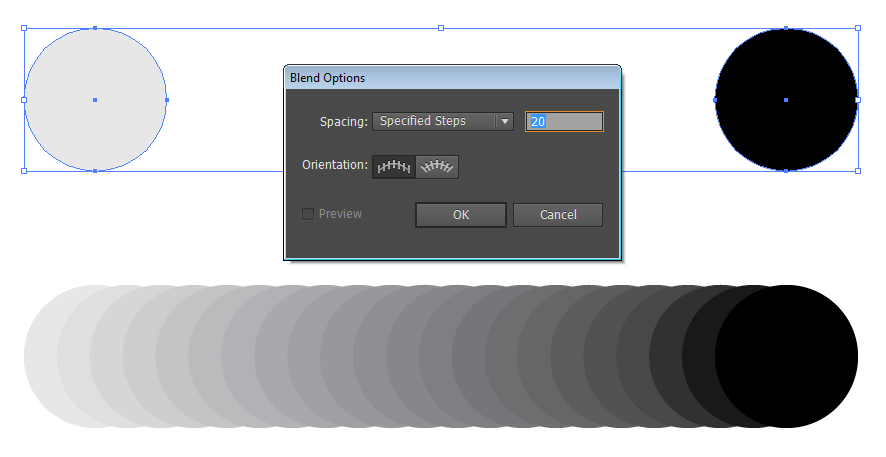This is called color interpolation. It is what gradients do under the hood. You can do so using a variety of means and methods, and exactly how the results are interpolated depends on the method.
I commonly do this for web projects using JavaScript so that I can change colors dynamically, such as in this music visualizer. A JavaScript implementation that has a very straightforward method of linear interpolation using RGB, pulled from the example above, is as follows:
// Returns a single rgb color interpolation between given rgb color
// based on the factor given; via https://codepen.io/njmcode/pen/axoyD?editors=0010
function interpolateColor(color1, color2, factor) {
if (arguments.length < 3) {
factor = 0.5;
}
var result = color1.slice();
for (var i = 0; i < 3; i++) {
result[i] = Math.round(result[i] + factor * (color2[i] - color1[i]));
}
return result;
};
// My function to interpolate between two colors completely, returning an array
function interpolateColors(color1, color2, steps) {
var stepFactor = 1 / (steps - 1),
interpolatedColorArray = [];
color1 = color1.match(/\d+/g).map(Number);
color2 = color2.match(/\d+/g).map(Number);
for(var i = 0; i < steps; i++) {
interpolatedColorArray.push(interpolateColor(color1, color2, stepFactor * i));
}
return interpolatedColorArray;
}
Which is used like so and returns an array of the interpolated colors:
var colorArray = interpolateColors("rgb(94, 79, 162)", "rgb(247, 148, 89)", 5);
You can also find PhotoShop (and likely other program) extensions for doing color interpolation.
However, you might want to check to make sure the method of interpolation is the same one that you desire, as you can use any function and color system to interpolate based on. For more about what I mean by that, see Rafael's answer. Also, here's one tool that generates gradients using a few different methods that illustrates the difference.




